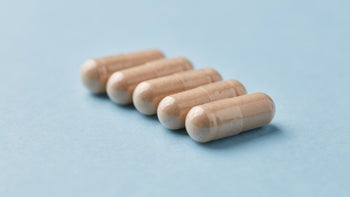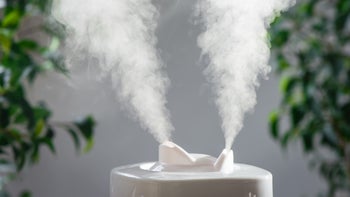
Are Deodorants With Aluminum Bad for You, and Should You Switch to Natural?
Key takeaways:
Some ingredients in popular deodorants and antiperspirants have been loosely associated with certain health conditions, like breast cancer and Alzheimer’s disease.
Most studies don’t show a definitive link between deodorants with these ingredients and health problems, but more research is needed to be sure.
Switching to natural deodorant can be a good option for people concerned about any health risks.
Table of contents
Deodorants and antiperspirants are a part of most people’s daily routine. Some common ingredients in them, including aluminum and parabens, have been linked with different health conditions, like breast cancer and Alzheimer’s disease. So far, most studies haven’t proven these associations, but many people are switching to more natural products.
Here, we’ll review the differences between deodorants and antiperspirants, the ingredients that have been linked to health problems, and how to switch to a more natural product.
Are popular antiperspirants and deodorants safe?
Yes. In general, deodorants and antiperspirants are safe when used as directed. But there have been concerns about certain ingredients being linked to some health problems, causing people to switch to more natural products.
Search and compare options
Before reviewing some of these concerns, it’s helpful to understand what causes body odor (BO), and how deodorants and antiperspirants work to reduce and prevent BO.
What causes body odor?
First, let’s talk about sweating. We may not always love it, but sweating is a normal and healthy part of life. Sweating helps your body cool off and also helps keep your skin healthy. While we have sweat glands all over our body, it’s the sweat glands in our armpits and genitals that usually create the most odor. These sweat glands are called apocrine glands.
Technically, the sweat produced by these glands doesn’t have a smell. But apocrine glands release a type of sweat that’s thicker than the sweat on the rest of your body. When it comes into contact with the bacteria that naturally live on your skin, it creates a body odor that most people find unpleasant.
Difference between antiperspirants and deodorants
Deodorants and antiperspirants do different things. Deodorants reduce smell, while antiperspirants reduce sweat. Here’s how they work:
Deodorants eliminate or reduce bacteria with alcohol or other chemicals that kill bacteria (called antimicrobial). They can also have fragrances or other compounds to mask odors.
Antiperspirants use compounds like aluminum to block sweat. The aluminum reacts with sweat and forms a plug inside the sweat duct, keeping sweat from coming out. Antiperspirants also treat excessive sweating (called hyperhidrosis). They’re available over the counter and in prescription strengths.
Are deodorants and antiperspirants regulated?
Yes. The FDA regulates deodorants as cosmetic products and antiperspirants as over-the-counter (OTC) drugs. This means they have the same FDA rules as other OTC medications.
Read more like this
Explore these related articles, suggested for readers like you.
Why is there aluminum in antiperspirants?
Aluminum is the main active ingredient in antiperspirants because it works well to prevent sweating. Aluminum is added to antiperspirants as a compound with other ingredients, such as:
Aluminum with chloride
Aluminum with zirconium
Aluminum with zirconium and chloride
Keep in mind that you’re exposed to aluminum in many ways other than just antiperspirants. Aluminum is present naturally in certain foods and water, and it’s also used in:
Household items (like aluminum foil and cooking utensils)
Cosmetic products (like antiperspirants and toothpaste)
Medications (like antacids)
Studies have shown that very little aluminum (0.012%) is actually absorbed through the skin from antiperspirants, but this may vary from person to person.
Is aluminum in deodorant bad? What does science say?
There have been various health concerns associated with antiperspirants and deodorants. Most of them have to do with aluminum exposure, but some are about other potentially harmful ingredients. We’ll review some of the main health concerns here.
1. Breast cancer risk
The link between aluminum in antiperspirants and breast cancer has been questioned for many years. There has been concern that the aluminum accumulates in breast tissue, where it can act like estrogen, a hormone linked to an increased risk of breast cancer.
Several studies have looked at this question. Most have shown that there’s no increased risk of cancer from using deodorants or antiperspirants. Some studies, including a more recent one, have pointed to a possible increased risk of breast cancer when underarm products are started at a younger age. But that might simply be because starting puberty at a younger age can increase the risk of breast cancer. At this point, no definitive link has been established that these products can cause cancer, but more research is needed.
2. Alzheimer’s disease
The research on aluminum and Alzheimer's disease is mixed. Some animal studies show that aluminum exposure can cause brain lesions that lead to Alzheimer’s. In humans, it’s less clear. Studies looking for a link between aluminum in drinking water and Alzheimer’s disease have been conflicting — some have found a link while others found no association.
One large meta-analysis (a formal review of many studies) found some evidence that chronic aluminum exposure might increase your risk for Alzheimer’s disease. But some of those studies were looking at people who worked with metals and had high levels of exposure. When it comes to aluminum-containing deodorant, there are no studies looking directly at the link between antiperspirant and Alzheimer’s risk. As noted above, only a small amount of aluminum is absorbed through the skin from deodorant.
3. Kidney disease
There have also been concerns about too much aluminum exposure in people with kidney disease. There are several reasons why someone with chronic kidney disease is more at risk for aluminum overload in general:
The kidneys have a tougher time getting rid of aluminum in the blood.
Some medications used to treat complications of kidney disease are aluminum-based.
Sometimes people with chronic kidney disease need dialysis, a process of filtering out extra blood and toxins. In the past, dialysis sometimes created high levels of aluminum from all the water used. This led to several health problems, including a type of dementia called “dialysis dementia”.
Now that people use a different type of water for dialysis and monitor aluminum levels more closely, it’s much less likely to get aluminum overload from dialysis.
Because of this, the FDA has a warning on deodorants to check with your healthcare professional if you have chronic kidney disease. However, no studies exist that link deodorant use with kidney disease or aluminum overload. The National Kidney Foundation reports that absorption of aluminum through the skin is very unlikely to harm the kidneys.
Other chemicals of concern in deodorant
It’s not just aluminum that people are concerned about. Other chemicals in deodorants and antiperspirants have also been studied to see if they lead to different health problems.
Parabens
Parabens are artificial preservatives. The United Nations Environment Programme has identified parabens as a type of endocrine-disrupting chemical. This means that these chemicals may affect hormones in the body in different ways. There are concerns that they might lead to fertility problems, birth defects, and breast cancer. However, there are no studies that prove a link between parabens in deodorant and any of these concerns. Also, many common deodorant brands don’t contain paraben in the ingredients.
Triclosan
Triclosan is a chemical used to kill bacteria. It may be linked to reproductive and thyroid problems as well as an increased risk of asthma. People are exposed to triclosan regularly. It’s added to many personal care products like toothpaste, hand sanitizers, soaps, and mouthwash. One study found that 75% of the population has triclosan in their urine. However, it’s not clear if these levels cause problems. Once again, more research is needed.
Phthalates
Phthalates are compounds that help deodorant stick to the skin. They’re another type of endocrine-disrupting chemical. Phthalates have been linked to infertility, asthma and pregnancy complications. Studies have shown that using deodorant is associated with higher levels of phthalates in the urine of both men and women. While it’s not clear exactly what level is too high, you might want to choose an unscented deodorant or antiperspirant. This is because most fragrances contain phthalates, and they’re usually not listed separately.
Fragrance chemicals
Fragrance is a common ingredient in scented products, but it doesn’t specifically mean one thing. Besides phthalates, it could refer to many different chemicals. It’s also a common cause of skin allergies. For those who prefer to avoid this, you can opt for fragrance-free deodorant or antiperspirant.
What are the benefits of natural deodorant?
So far, studies don’t prove that popular deodorants and antiperspirants are bad for our health. But people may still switch to natural deodorants for many different reasons:
To avoid a certain chemical ingredient
To lower their exposure to different chemicals and potential toxins
To avoid any skin irritation they may have with antiperspirants
For peace of mind
Keep in mind that the term “natural” on cosmetics is not defined or regulated by the FDA. This means that natural products could still have problematic ingredients in them or contain different chemicals.
What are some common ingredients in natural deodorant and how do they work?
If you’re shopping for natural deodorants, knowing what’s in them can be helpful. The Environmental Working Group has a database where you can search for products and review their ingredients.
Here are some common ingredients in natural deodorants and how they work:
Absorbent ingredients include different powders, like baking soda and arrowroot, to absorb wetness.
Essential oils, like rosemary, tea tree oil, and sage, provide fragrance and may also kill bacteria.
Natural oils like coconut oil may form the base of the deodorant.
As with traditional deodorants and antiperspirants, you may need to try different natural products before you find one that works for you.
The bottom line
Some ingredients in popular deodorants and antiperspirants have been associated with different health conditions, like breast cancer or Alzheimer’s disease. However, studies haven’t proven a link between deodorants with aluminum and health problems. This might be because the amount of aluminum absorbed from deodorants into the skin is very low. In some cases, no studies have been done to investigate the link between deodorants and a particular health concern. Other common ingredients, like parabens or phthalates, do seem to get absorbed into the body from the deodorant. However, it’s not clear if this leads to harmful levels in humans. Switching to natural deodorant may be a good option for people concerned about any health risks.
Why trust our experts?



References
American Cancer Society. (2022). Antiperspirants and breast cancer risk.
Anderson, E., et al. (2020). Trending - natural & conventional deodorants. Michigan State University Center for Research on Ingredient Safety.
Boyd, C. (2014). Which chemicals make deodorants and antiperspirants work? Chem Service, Inc.
Carson, C. F., et al. (2006). Melaleuca alternifolia (tea tree) oil: A review of antimicrobial and other medicinal properties. Clinical Microbiology Reviews.
Darbre, P. D. (2005). Aluminium, antiperspirants and breast cancer. Journal of Inorganic Biochemistry.
Darbre, P. D. (2009). Underarm antiperspirants/deodorants and breast cancer. Breast Cancer Research.
de Oliveira, R. B., et al. (2021). Aluminum intoxication in chronic kidney disease: Intoxicação óssea por alumínio na doença renal crônica. Brazilian Journal of Nephrology.
Denton-Hurst, T., et al. (2023). The 16 very best natural deodorants. The Strategist.
Environmental Working Group. (n.d.). Antiperspirant/deodorant products. Skin Deep.
Environmental Working Group. (2007). Ask EWG: What is “fragrance”?
Environmental Working Group. (2008). Cheatsheet: Phthalates.
Exley, C. (2004). Aluminum in antiperspirants: More than just skin deep. The American Journal of Medicine.
European Food Information Council. (2021). Aluminium in food (Q&A): Sources, safety and regulations. Food Facts for Healthy Choices.
Flarenda, R., et al. (1999). Analysis of aluminum-26 labeled aluminum chlorohydrate. Journal of Inorganic Biochemistry.
Galligan, T. (2019). Antiperspirants and breast cancer: Is there a link? Environmental Working Group.
Hager, E., et al. (2022). Minireview: Parabens exposure and breast cancer. International Journal of Environmental Research and Public Health.
Hara, Y. (2018). Is there a link between aluminum and Alzheimer’s? Cognitive Vitality.
Heid, M. (2016). 5 things wrong with your deodorant. TIME.
Hodge, B. D., et al. (2022). Anatomy, skin sweat glands. StatPearls.
International Hyperhidrosis Society. (n.d.). Antiperspirant basics.
Klotz, K., et al. (2017). The health effects of aluminum exposure. Deutsches Arzteblatt International.
Linhart, C., et al. (2017). Use of underarm cosmetic products in relation to risk of breast cancer: A case-control study. eBioMedicine.
Mach, J. R., Jr., et al. (1988). Dialysis dementia. Clinics in Geriatric Medicine.
Mandriota, S. J., et al. (2023). The postulated innocuity of lifetime exposure to aluminium should be reappraised. Frontiers in Oncology.
Nassan, F. L., et al. (2017). Personal care product use in men and urinary concentrations of select phthalate metabolites and parabens: Results from the environment and reproductive health (EARTH) study. Environmental Health Perspectives.
National Institute of Environmental Health Sciences. (2023). Cosmetics and your health.
National Kidney Foundation. (n.d.). Antiperspirants.
National Kidney Foundation. (n.d.). Chronic kidney disease (CKD).
Oaklander, M. (2016). Deodorant and antiperspirant mess with your microbes. TIME.
Parlett, L. E., et al. (2013). Women's exposure to phthalates in relation to use of personal care products. Journal of Exposure Science and Environmental Epidemiology.
Rodella, L. F., et al. (2008). Aluminium exposure induces alzheimer’s disease-like histopathological alterations in mouse brain. Histology and Histopathology.
Rondeau, V., et al. (2000). Relation between aluminum concentrations in drinking water and alzheimer’s disease: An 8-year follow-up study. American Journal of Epidemiology.
Sneed, A. (2021). Are natural deodorants really better for you? The New York Times.
Stoiber, T. (2019). What are parabens, and why don’t they belong in cosmetics? Environmental Working Group.
Susan G. Komen. (2023). Age at first period.
Travis, R. C., et al. (2003). Oestrogen exposure and breast cancer risk. Breast Cancer Research.
United Nations Environment Programme. (n.d.). About the United Nations environment programme.
United Nations Environment Programme. (n.d.). Endocrine disrupting chemicals.
U.S. Food and Drug Administration. (2017). Rulemaking history for OTC antiperspirant drug products.
U.S. Food and Drug Administration. (2019). 5 things to know about triclosan.
U.S. Food and Drug Administration. (2023). Small business & homemade cosmetics: Fact sheet.
Van Dyke, N., et al. (2021). Association between aluminum in drinking water and incident alzheimer’s disease in the Canadian study of health and aging cohort. Neurotoxicology.
Wang, Z., et al. (2016). Chronic exposure to aluminum and risk of Alzheimer’s disease: A meta-analysis. Neuroscience Letters.
Weatherly, L. M., et al. (2017). Triclosan exposure, transformation, and human health effects. Journal of Toxicology and Environmental Health. Part B, Critical Reviews.
Woelfel, J. A. (2005). FDA warning for aluminum-containing antiperspirants. University of the Pacific Scholarly Commons.





























